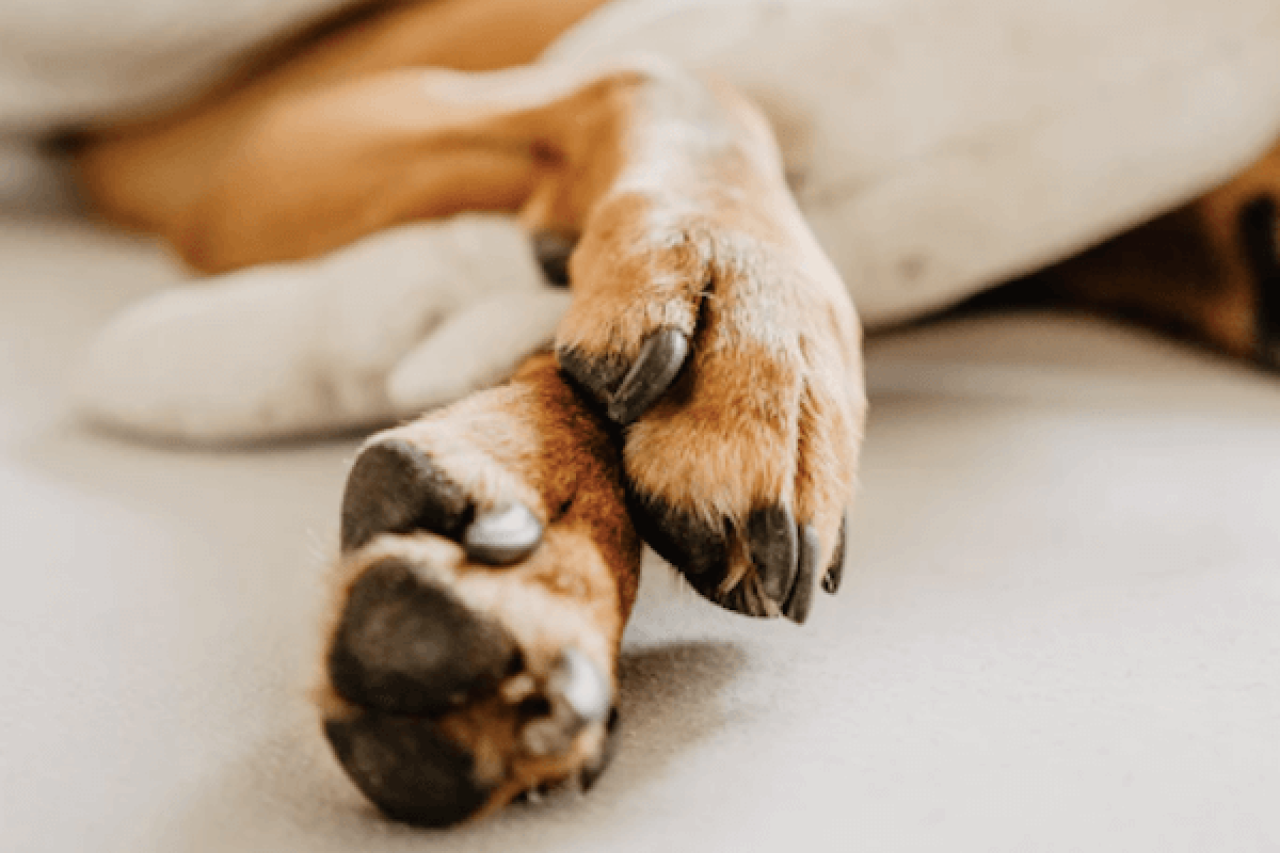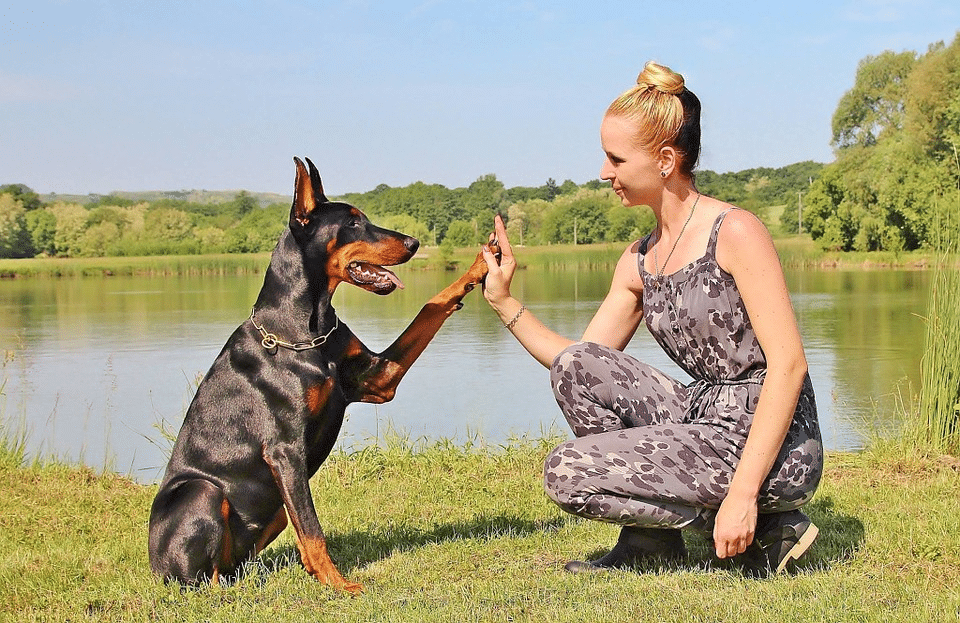
How to Trim Dog Nails With Confidence
Trimming your dog's nails can be an unnerving task. If you are a pet parent lucky enough to have an active dog whose nails file down naturally from running around on hard surfaces, you don't have to worry about clipping them regularly. For the rest of us, whipping out the nail clippers means the beginning of a delicate dog grooming process not every pupper is going to take lying down.
Keep reading for tips and tricks on why it is important to trim your dog's nails, proper nail trimming techniques, what equipment to use, and how to prep your furry best friend for the necessary evil that is nail trimming.
Why Pet Parents Need to Trim Their Dog's Nails
There are risks to letting your dog's nails go untrimmed. First and foremost, it's very painful for your pup. Long nails that grow out will curl and cause great discomfort by digging into your dog's paw. Overgrown nails are also much more susceptible to tearing and splitting, which is not only agonizing for your dog but results in quite a bloody mess as the exposed blood vessel will make your space look like a crime scene.
How Often Should You Trim Dog Nails?
If your dog is the sedentary type, Dr. Karen Gellman DVM PhD recommends trimming every 16 days or so. If your dog is relatively active and their nails file down naturally, keep an eye on their dewclaw on the side of their paw (the dog equivalent of a thumb) as the nail of this particular appendage does not typically touch the ground. Every dog is different, so a solid rule of thumb for determining when to trim dog nails is by listening. If you can hear your dog's nails clicking on hard surfaces when they walk, it's time for a trim.
Pawdicure Time: Best Practices for Trimming Dog Nails

Thinking of trimming your dog's nails can be stressful, but it doesn't have to be! Being prepared and taking a positive approach will be beneficial for both you and your dog during the trimming process. At the end of the day they will thank you for it. First thing's first: gather your materials.
Here are the items you need to have on hand when you trim your dog's nails:
- Dog nail scissors or a nail grinder
- Styptic powder like Kwik Stop (if you don't have styptic powder, cornstarch will do)
- Plenty of treats for encouragement
Once you have your materials, it's time for trimming.
1. Grasp the Paw
Grasp your dog's paw gently yet firmly, and use your fingers to separate each toe as you clip. Come at the nail with the clippers from underneath, not above like you might do for trimming human nails. Never put the whole length of the nail in the opening.
2. Identify the Quick
Place the end of the nail through the opening and take extra care not to slide it in over the quick of the nail. If your dog has light nails you can see the quick is the pinkish part before it turns white at the tip. Dark nails conceal the quick, so if your dog has black nails start by making very tiny cuts until you reach the pulp. The pulp comes right before the quick and is identified by a small dark spot in the center.
3. Make the Cut
Trim nails with caution. Cut the end of the nail below the quick at a 45 degree angle, taking off small amounts at a time. Stop when you reach the pulp. Reward your dog with a treat after clipping each nail to make the experience more gratifying for them.
4. Give Treats
Reward Fido with more treats for getting through nail clipping! You did it! The snacking reward will put them at ease and over time they will associate the nail clipping process with getting tasty food.
Nail Clippers or Nail Grinder?
Both options ultimately get the job done, but it is important to use either dog nail trimming tool safely.
Nail trimmers are the more popular method of clipping dog nails. There are scissor-style nail clippers, plier-style clippers, and guillotine-style clippers. Some nail trimmers come in different sizes to accommodate nails of smaller and larger dog breeds. All three types of dog nail clippers are exactly what they sound like, but the plier style is preferred by many dog parents for claw trimming in addition to the other nails. Whatever style of clippers you choose to trim your dog's nails, always start at the very tip of the nail.
A nail grinder is like an advanced nail file. Some dog parents prefer to use nail grinders because they can't accidentally cut the quick using one. The downside of using a nail grinder is that many dogs don't like the noise or sensation and will squirm in protest. If you are interested in using a grinder as opposed to clippers, the Dremel is a quieter and gentler option. If your dog has a longer coat make sure to trim the hair around the nail area so it does not get caught in the grinder. Gently apply the grinder to the bottom of the nail and slowly move it around the tip until you have removed a safe amount and it is polished and smooth.
I Cut the Quick! What Do I Do?
If you accidentally cut your dog's quick, don't panic! Yes, it can be scary because of how rapidly the bleeding starts, but rest assured, everything will be alright. If the nail got cut too short you can stop the bleeding quickly and easily with styptic powder or cornstarch. A cut quick is extremely painful for dogs.
When shopping for a styptic powder look for one that includes benzocaine for pain relief and keep it in your dog's first aid kit. To use styptic powder, dip your dog's injured nail into the powder or apply a generous amount with a moistened cotton pad. To stop bleeding hold it there while applying gentle pressure for five to 10 seconds. I f the bleeding does not stop after 15 minutes consult your veterinarian as soon as possible.
Trimming Dog Nails: The Bottom Line
Trimming your fur baby's nails safely and effectively is essential for your dog's health. Letting dog nails get too long puts them at risk for a lot more pain down the line. If you do not feel confident trimming your dog's nails on your own, you can always go to a professional groomer or have them trimmed at the vet.
If you hate trimming your dog's nails as much as they hate having their nails trimmed, there is a not-so-secret way to avoid the process altogether. It's as simple as taking them on regular walks, runs, or playing fetch every once in a while so they run around on structured surfaces. Though domesticated dogs in urban and suburban areas have fewer opportunities to get their paws on a surface that files their nails down naturally, it's up to us dog parents to keep them active.





























